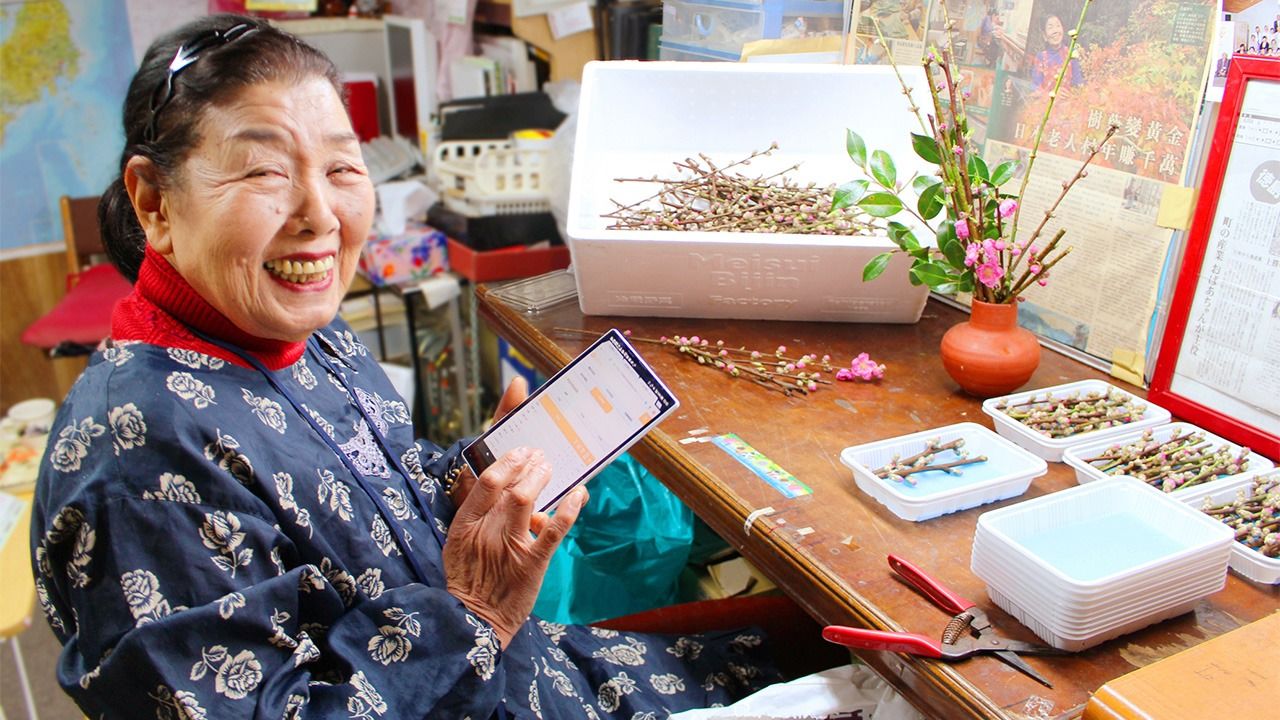
Leaf Business Breathes Life into Rural Community
Guideto Japan
Lifestyle Work- English
- 日本語
- 简体字
- 繁體字
- Français
- Español
- العربية
- Русский
Turning an Aging Community Around
The decorative seasonal leaves and flowers that adorn Japanese cuisine are known as tsumamono, and traditionally include maple leaves, bamboo leaves, and nandina leaves.

Sashimi garnished with leaves and other vegetation. (© Nippon.com)
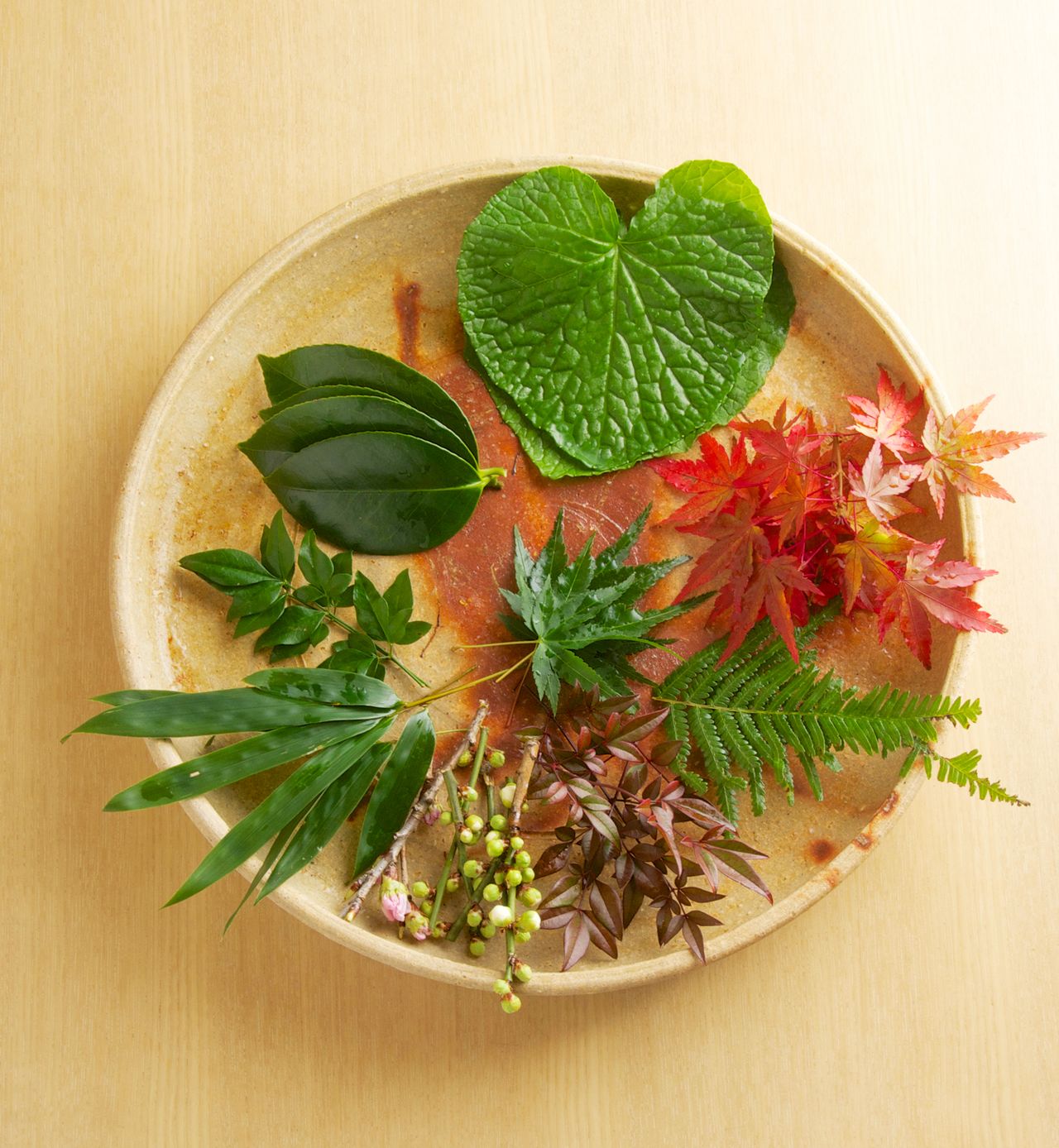
Kamikatsu produces over 300 varieties of garnish. (© Nippon.com)
Kamikatsu, nestled between the hills of Tokushima, is a major producer of tsumamono garnishes, which have been produced under the Irodori brand since 1987, achieving annual sales of up to ¥260 million. Most of the 145 cultivators are women aged over 70. Some of these women have even used their income to build houses for sons and daughters who have returned to the area to work.
The least populous municipality in Shikoku, Kamikatsu has a population of only 1,415, over half of whom are elderly. While in 1950 the town had a population of 6,356, the collapse of the logging industry that was once the town’s largest employer caused the population to fall. The economy hit rock bottom, but the town has now turned itself around, thanks to a new local industry in the form of the “leaf” industry.
The industry’s success has received extensive attention in the media, who have reported on the fact that old women in the rural town can earn ¥10 million a year by gathering leaves. The industry has even been covered by overseas magazines such as Time and Forbes, and in 2012 was the subject of a film, Jinsei, Irodori.
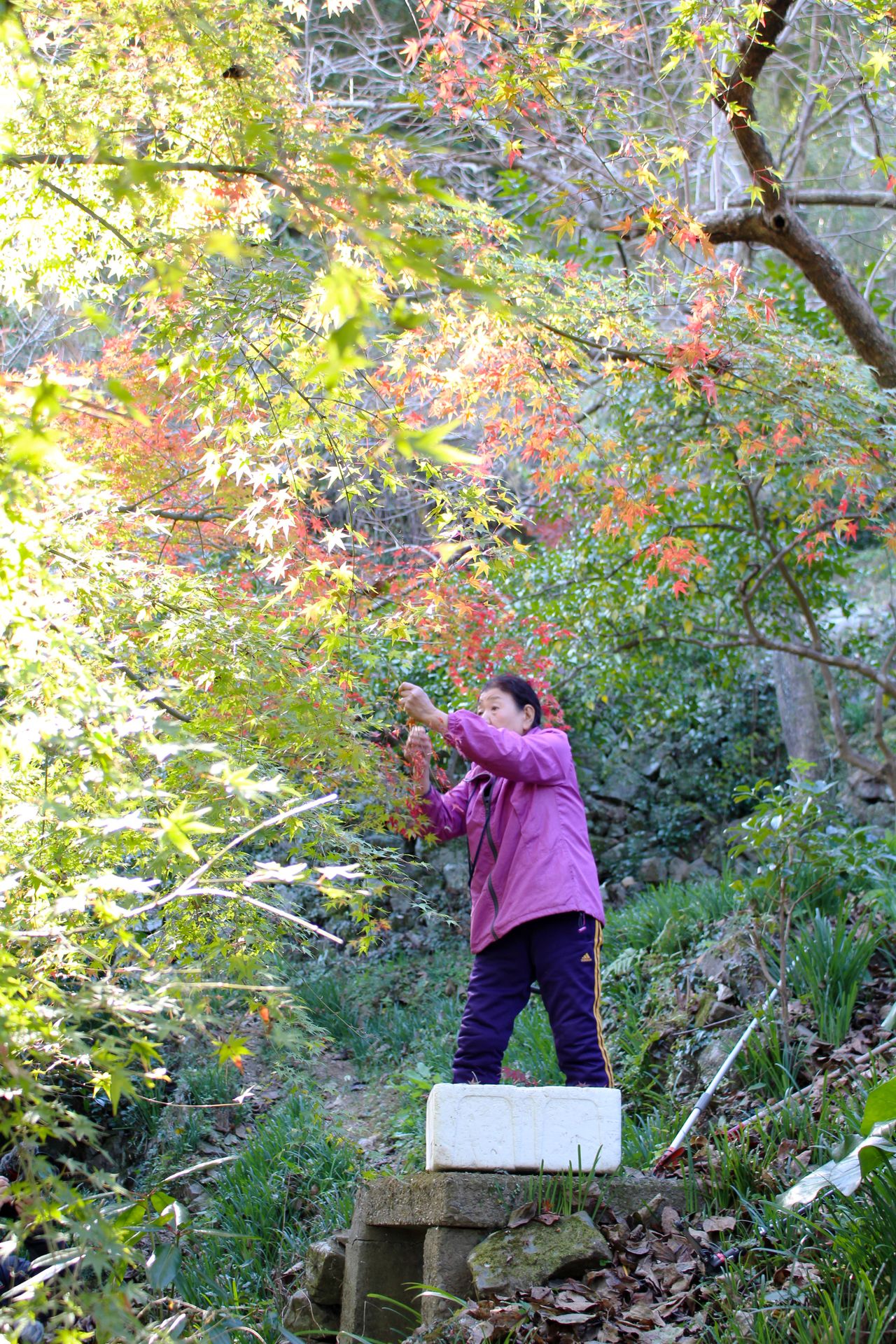
Collecting leaves. (© Nippon.com)
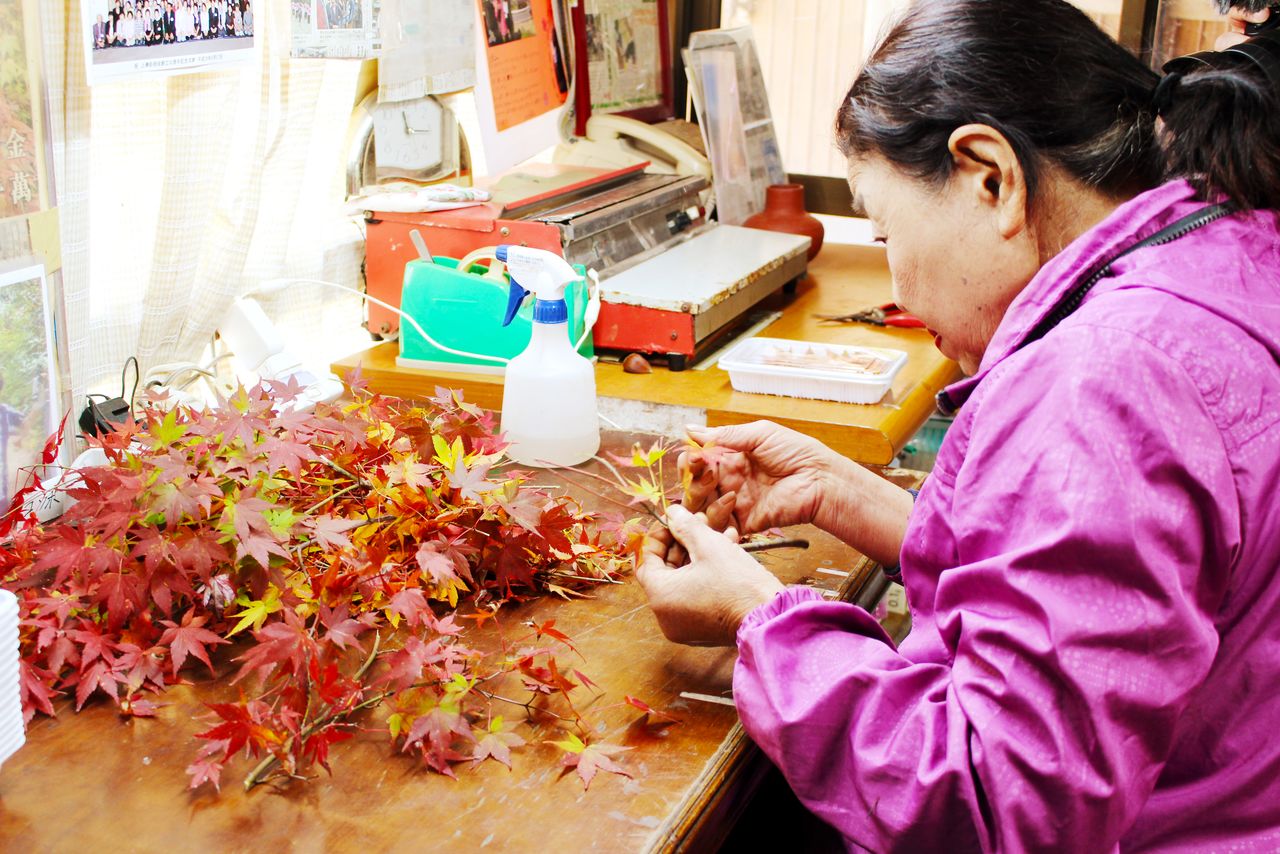
Leaves are arranged attractively for shipping. (© Nippon.com)
In addition to the leaf business, the Kamikatsu government also deployed a zero-waste initiative in 2003 in an attempt to revitalize the local economy. Japan is full of similar hillside villages with access to leaves suitable for use as garnishes. While the number of visitors who come to study Kamikatsu each year in the hope of re-creating the town’s success exceeds the entire population of the town, though, one has yet to hear of another region that has achieved similar success.
Yokoishi Tomoji, CEO of Irodori Corporation, a private company supporting garnish producers, puts the difference down to not just to the available vegetation but the people. Kamikatsu’s location in the mountains means it has many growers of flowering trees, therefore providing a good base for tsumamono cultivation. More than anything, the character of the local people, who walk mountain trails every day to cut grass and perform other needed tasks, made the area suitable for the industry.
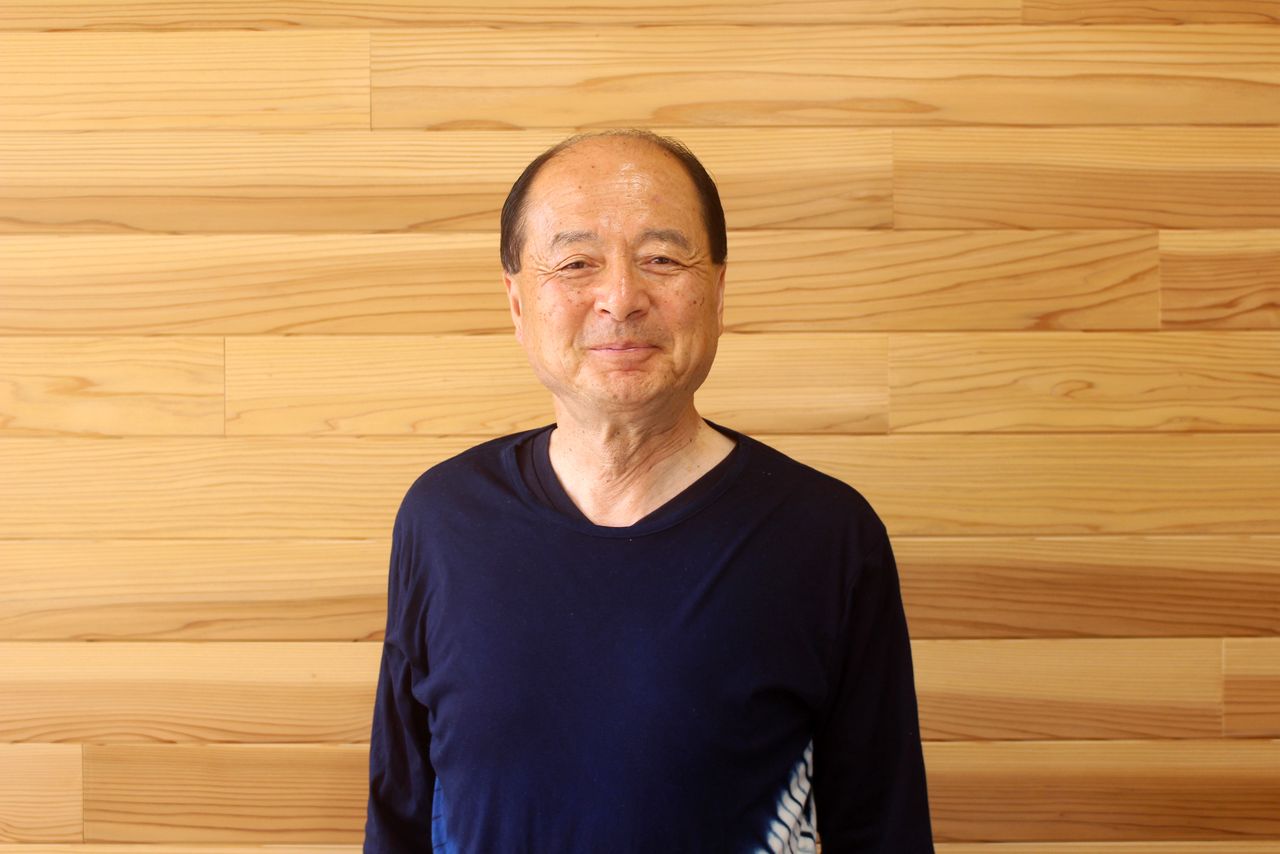
The leaf business was the brainchild of Yokoishi Tomoji. (© Nippon.com)
Hard Work by Elderly Female Farmers Pays Dividends
The local leaf business began after an unusually severe cold snap in 1981 completely wiped out the mandarin trees that had been the area’s sole agricultural produce. Yokoishi, who at the time worked for an agricultural cooperative giving advice on farm management, suggested local farmers grow shiitake mushrooms instead of mandarins. However, the need to work with heavy logs means that mushroom cultivation is unsuitable for elderly and other less physically vigorous farmers.
After five years of searching for a suitable replacement, a then 28-year-old Yokoishi encountered tsumamono. A young woman he knew liked the garnish that adorned her restaurant meal so much that she took it home with her. This gave Yokoishi an epiphany.
“I thought, ‘That’s it: we can sell leaves!’ The hills of Kamikatsu were covered in leafy trees, and leaves are lightweight, easy to handle, and allow people of any physical capability to use their aesthetic sensibilities,” he says.
While it struck him as an ingenious idea, locals told him curtly that they didn’t live in some fairytale where leaves could be magically turned into money. They said they would feel embarrassed picking up leaves. While Yokoishi managed to commence production in February 1987 with the cooperation of four female farmers, initially they had no success whatsoever.
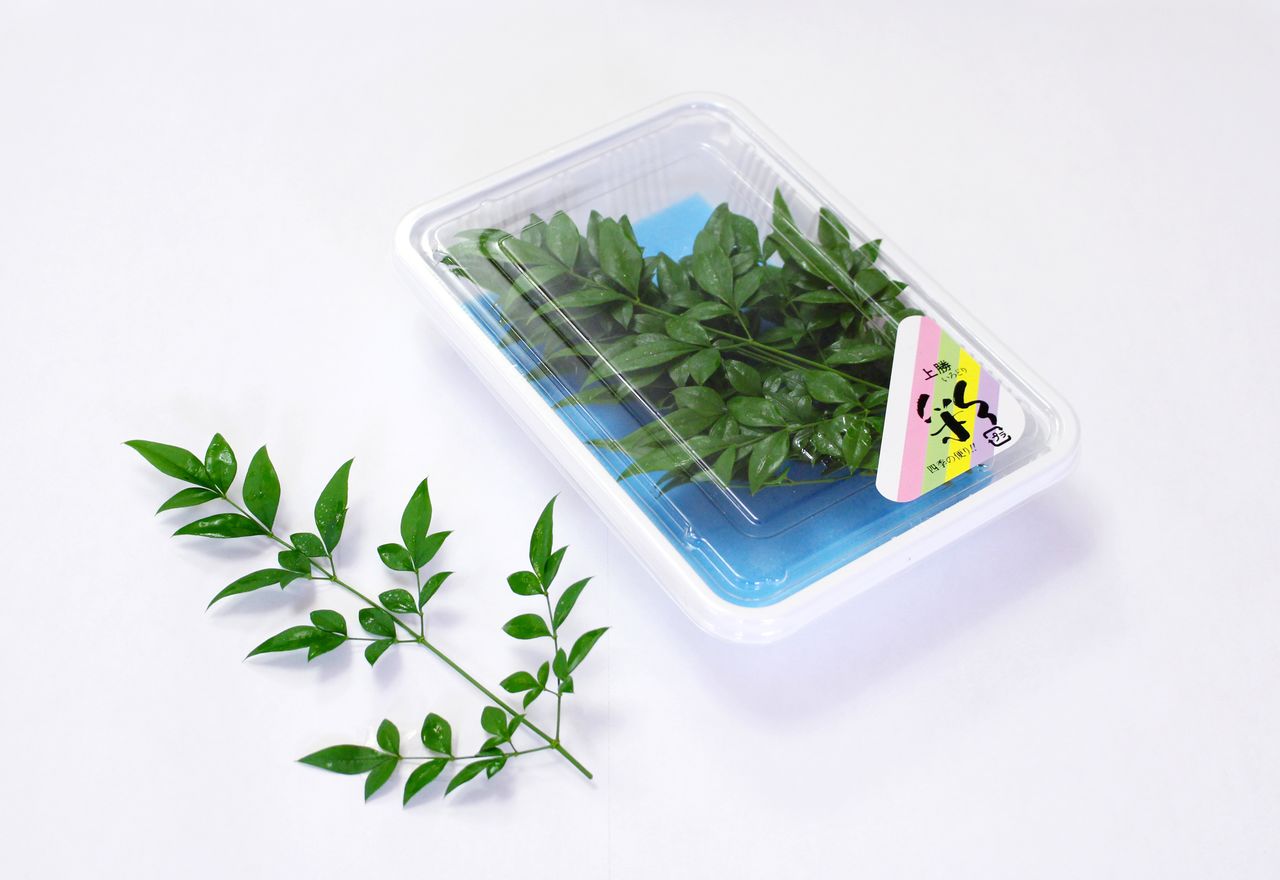
From the beginning, garnish produced in the area has featured the Irodori brand. Pictured are nandina leaves. (© Nippon.com)
Putting his initial failure down to a lack of understanding of what restaurants wanted, Yokoishi began going to restaurants to study which garnishes they used and how they arranged them. Paying for meals out of his own pocket, he visited many restaurants in Tokushima and further afield, burning through the lion’s share of his salary in the process. He told the farmers to pack leaves of similar sizes together so that they were easier to match to dish size, and to focus on leaves that had striking colors and shapes rather than just picking anything available. He also gave them other advice on making their products more likely to be chosen by restaurants. Knowing that Japanese cuisine keeps ahead of the seasons, he incorporated early cultivation techniques learned from tree farmers. His efforts paid off, and his business’ turnover steadily grew. As his reputation as the man who could turn leaves into money spread, more and more farmers joined his business.
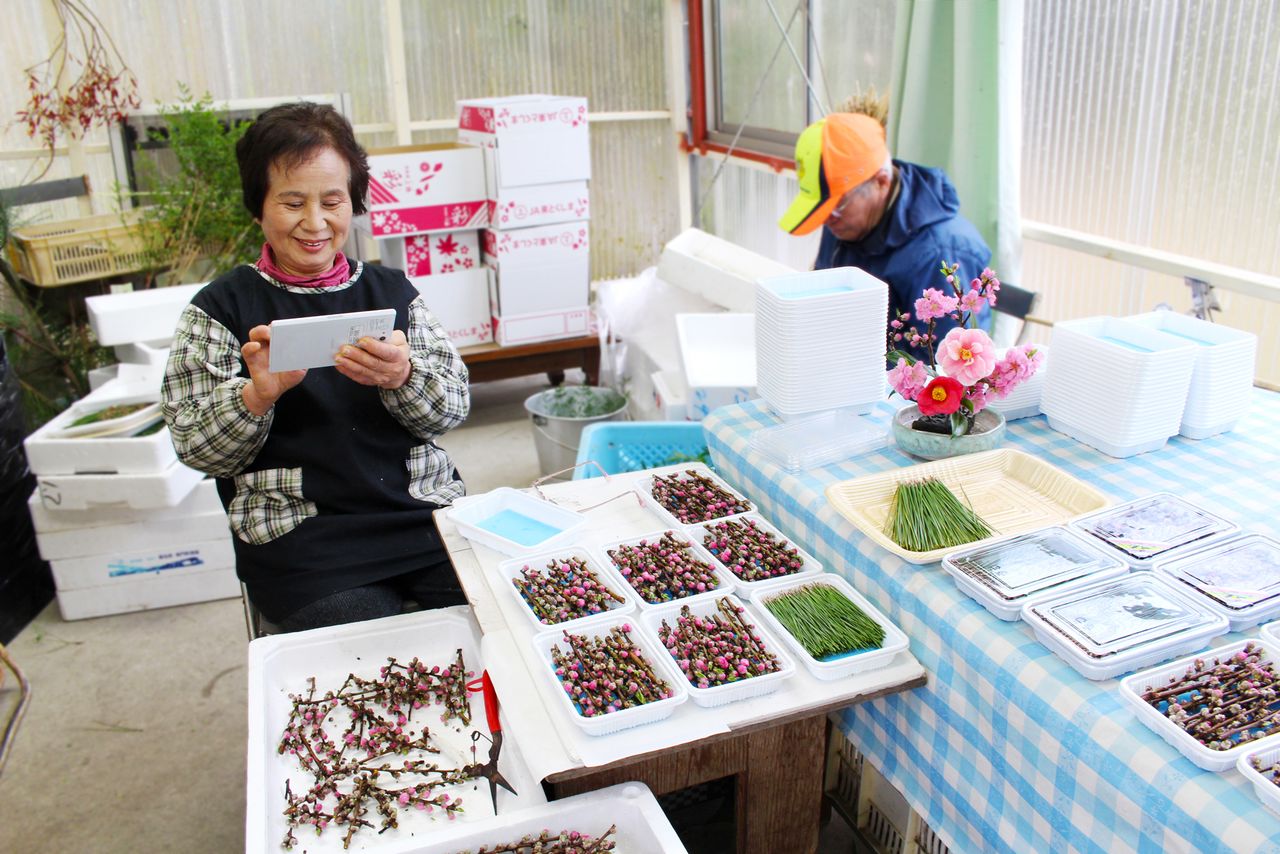
A producer accesses market information online. (© Nippon.com)
One factor in Yokoishi’s success was the introduction of a cutting-edge IT system. In 1999, when Irodori was established, Yokoishi established a retail point-of-sale system and began sharing information with his suppliers via computer. While this represented an investment of over ¥100 million, his project was chosen as a test project to receive a grant from the Ministry of Economy, Trade, and Industry (then the Ministry of International Trade and Industry).
Back then, the elderly people he worked with had never touched a computer, but these days his producers are comfortable using tablets. A platform provided by Irodori known as the Kamikatsu Information Network motivates growers by showing them how they rank against other producers, enabling them to analyze the market based on shipping volumes.
Irodori’s older female producers are all hale and hearty, with some even telling Yokoishi they are “too busy to get sick.” Their work ethic has generated income for themselves and breathed life into the township. For Yokoishi, this has been the greatest reward.
Demographic Diversity and Colorful Hills
Thirty-six years on, many producers have passed the job down to their children, so there are more farmers in their fifties. Despite this, the town’s population continues to fall and age. As he looks to the future, Yokoishi is now most focused on training up younger generations to enter the industry. Irodori has been operating an internship program for 10 years in partnership with the Kamikatsu government, with some graduates having established their own businesses in the area. Convinced that the young people who relocate to the town are of high caliber, either having an interest environmental issues or having studied abroad, Yokoishi advertised outside the township for employees. The current staff, all in their twenties, thirties, or forties, are people who have relocated to the area for work.
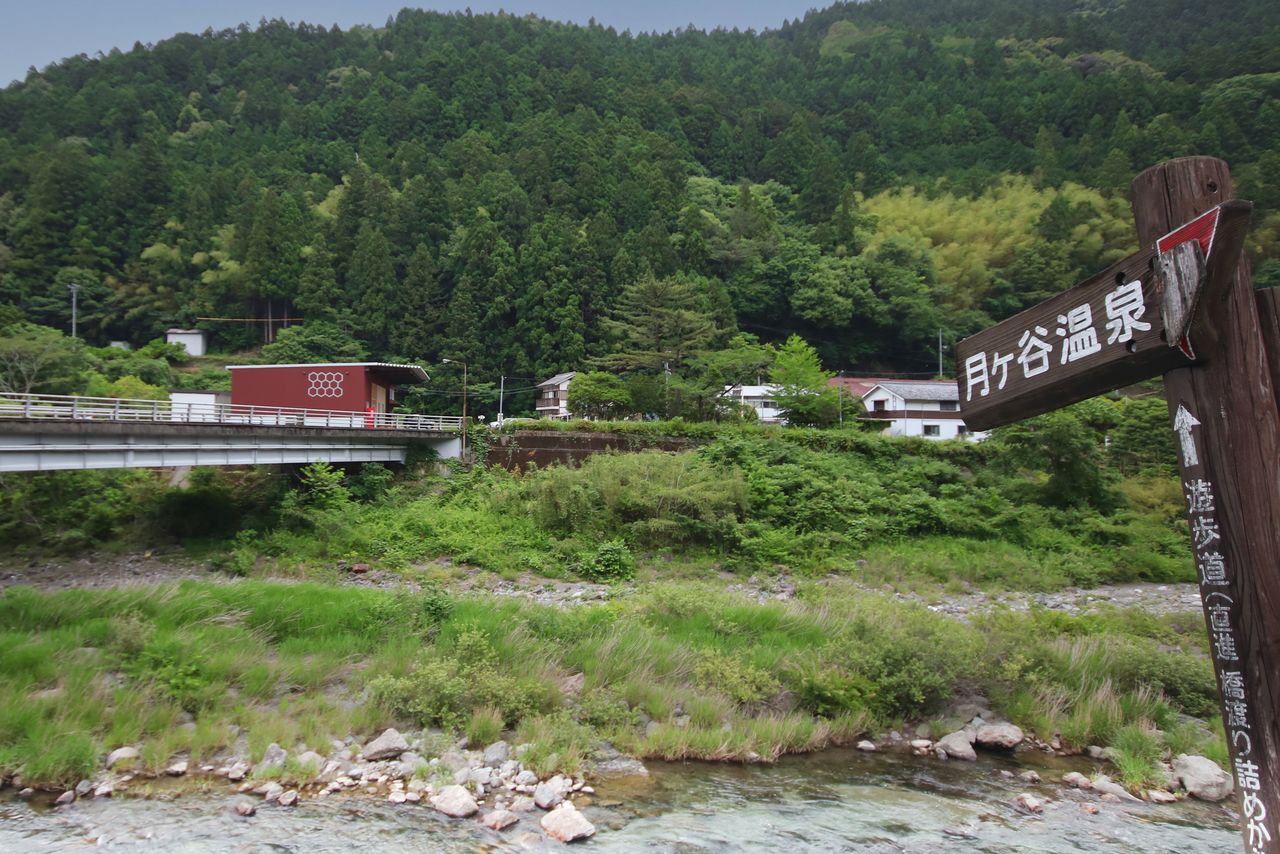
The company works out of a premises leased from the local government. (© Nippon.com)
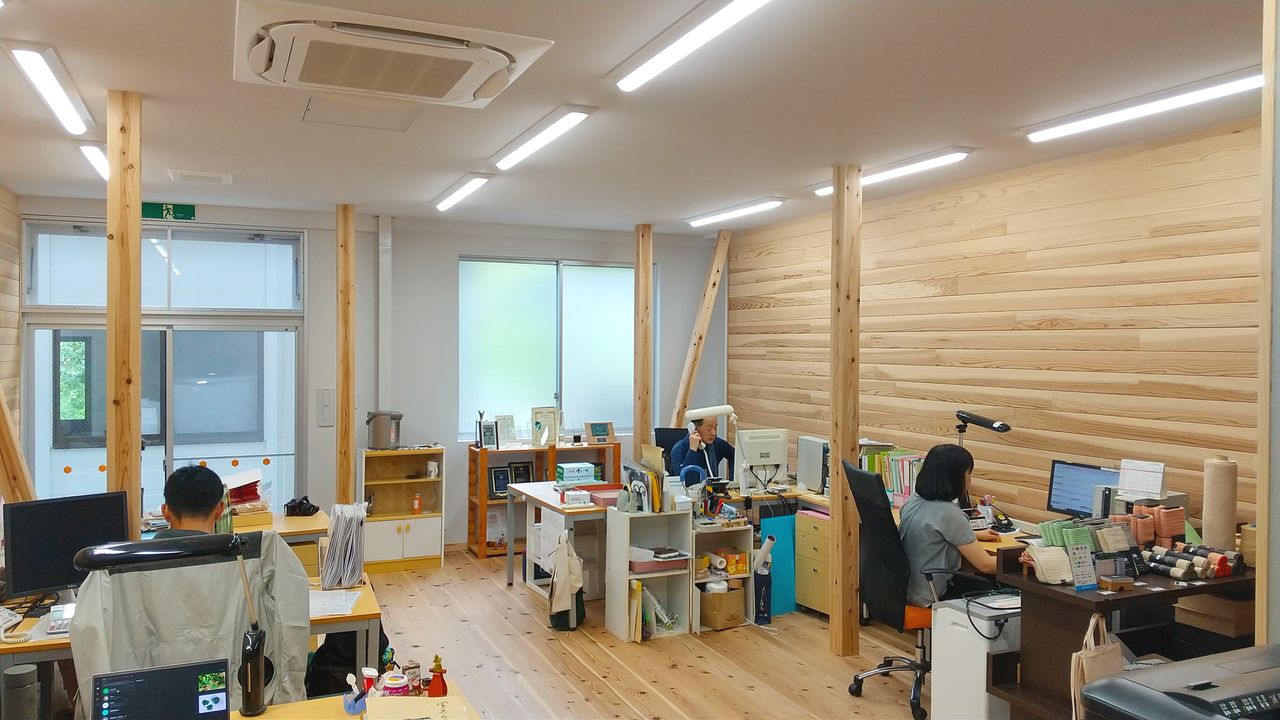
All of Irodori’s eight employees come from outside the area. (© Nippon.com)
However, the goal of regional development is not always population increase. Yokoishi believes that “even with population levels below 1,500, the town can be sustainable if it establishes a circular economy.” To this end, he advocates the “colorful forest” concept. Kamikatsu is 90% forest, mostly consisting of cultivated stands of cryptomeria (Japanese cedar). However, the recent downturn of the forestry sector has caused the forest to fall into ill management, increasing the risk of landslides and other disasters. In response to this issue, the project plans to replace these evergreens with deciduous trees whose leaves can be used for garnishes, thereby transforming the area into a visual feast of flowers and autumn leaves.
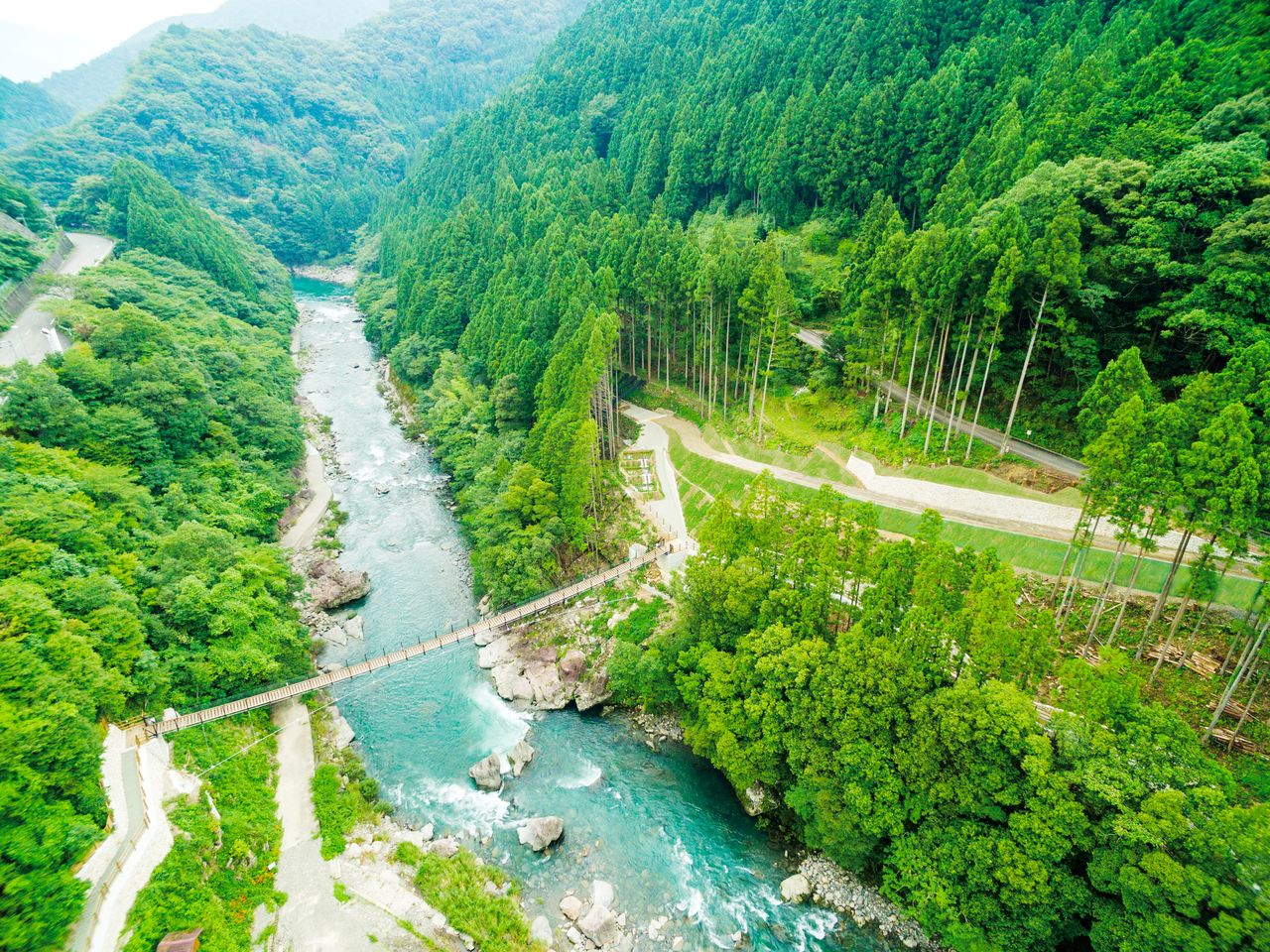
The Irodori Bridge spans the Katsuura River. (© Nippon.com)
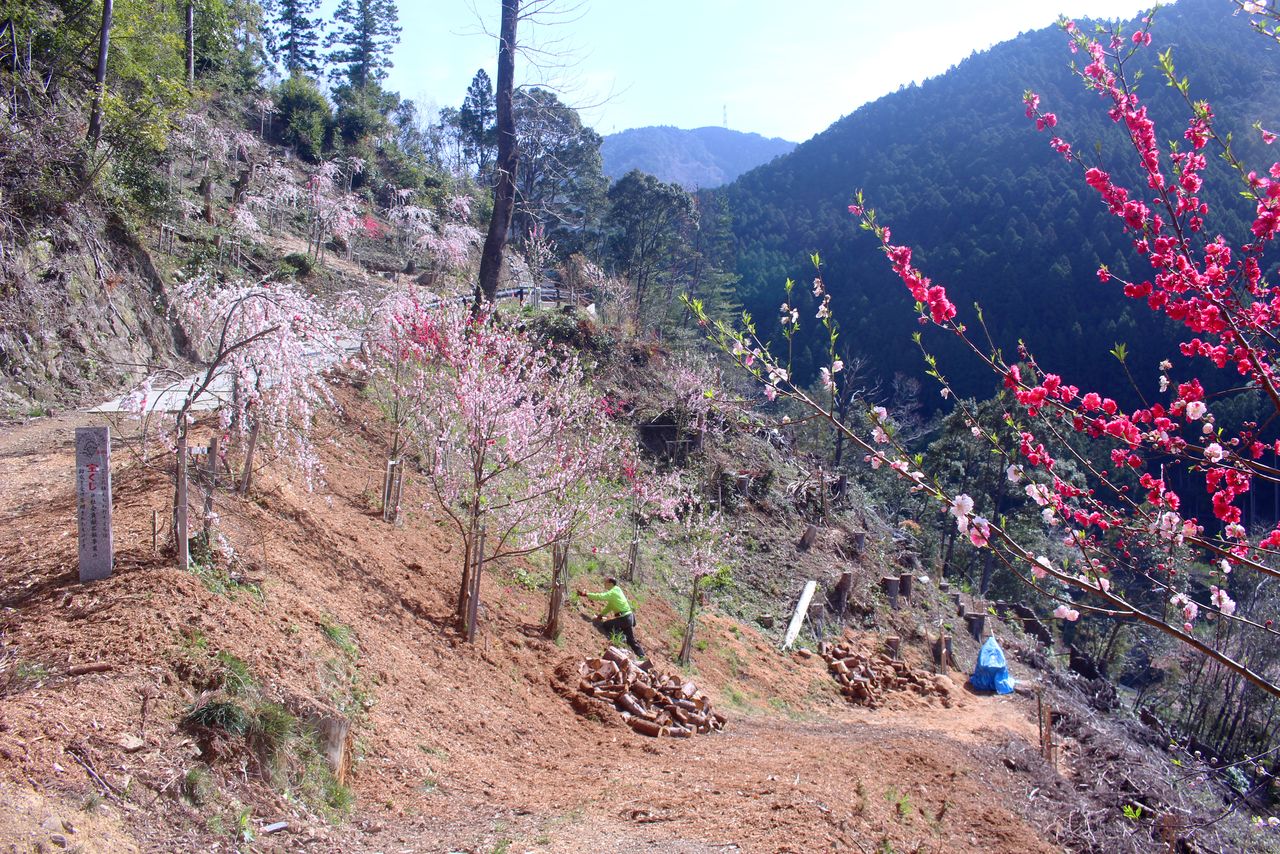
Many flowering trees have been planted on the “colorful hills.” (© Nippon.com)
In 2018, Irodori opened what it calls the “colorful hills training garden” to act as a hub for training tsumamono producers. As well as allowing those who have moved to the area to experience agricultural work, the garden also acts as a product showroom. The suspension bridge over the ravine that runs through the colorful hills is a popular photo spot, and, along with the nearby hot springs and campsite, serves as a popular tourist destination.
Wood biomass from trees felled in the area is used by factories and hotels. The local brand Kinof produces fabrics from the harvested cedar. Yokoishi says he wants to make the hills of Kamikatsu bloom, thereby helping to reuse the natural resources the town has inherited, putting them to good use in industry, the environment, and tourism.
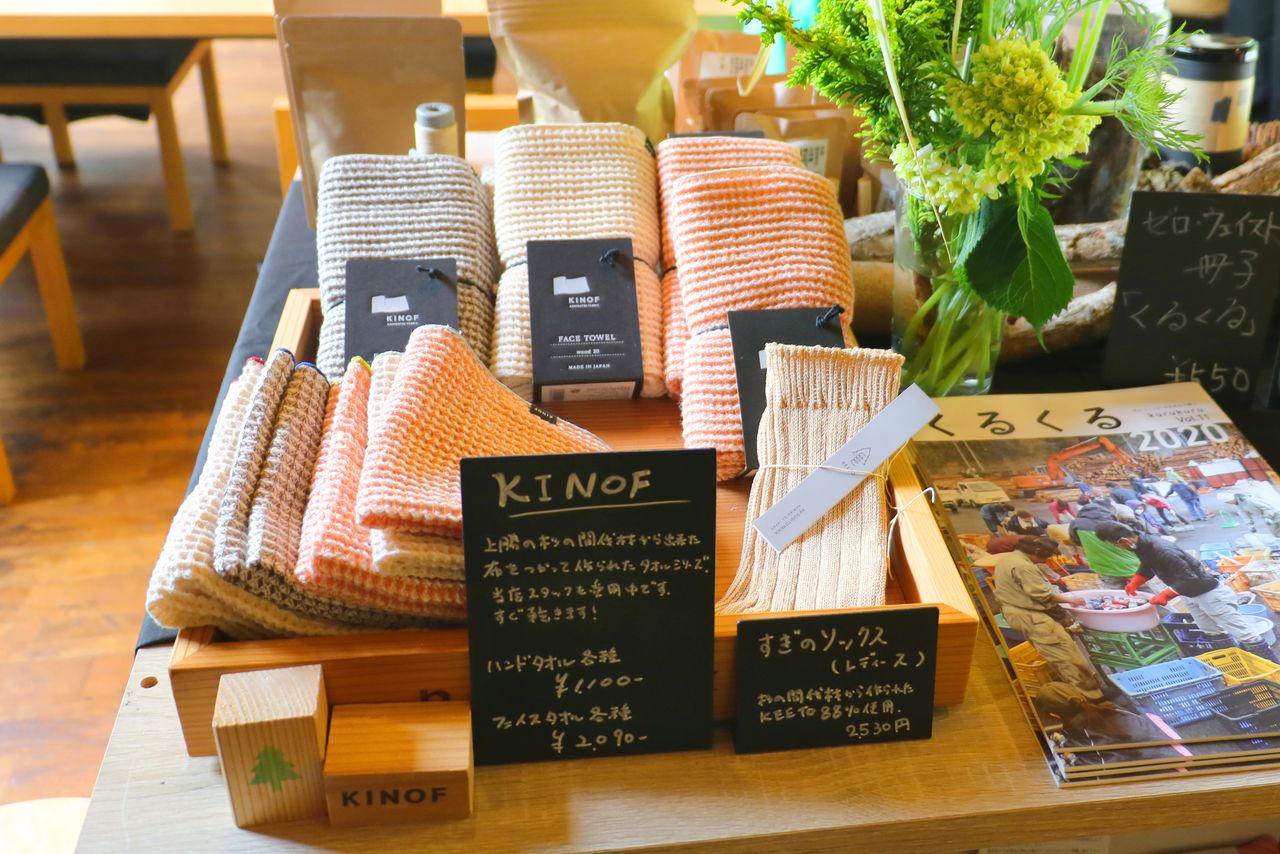
Kinof textiles are made from cryptomeria, which has excellent antibacterial properties. (© Nippon.com)
Yokoishi speaks with the voice of experience when he says, “When you move to a rural community, you are expected to really become involved in the area, and if you start a business you will be unpopular if you do not ensure that profits flow back into the community, That’s something we’re doing well in Kamikatsu.” Himself an out-of-towner, Yokoishi has commuted from the nearby city of Tokushima for 44 years. He says was initially treated as an outsider, but turned the frustration he felt into motivation, and went onto build a successful leaf business that benefited the whole community.
“My love for my work enabled me to carry on. The same applies to the older female producers: They work until late into the night because they love the way their products are selling. I therefore feel that if more young people come to live here, the area will benefit,” he says.
(Originally published in Japanese. Photos provided by Irori Corporation. Reporting and text by Fujiwara Tomoyuki of Nippon.com.)